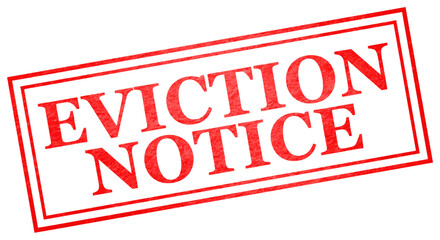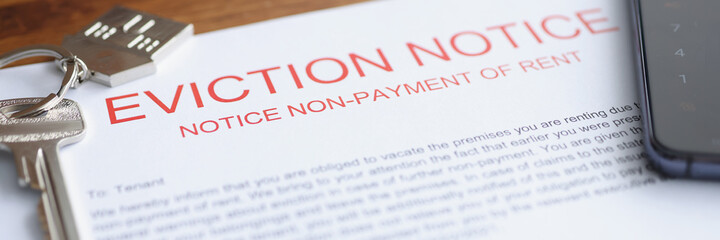Request, Notice, Compliance, Eviction, Post-Judgment, and Civil Lawsuit
Navigating the eviction process in California can be challenging for both landlords and tenants. This guide aims to provide a simple summary overview of each stage involved - Request, Notice, Compliance, Eviction, Post-Judgment, and Civil Lawsuit - offering insights into the difficulties and complications that may arise for both parties. By understanding these steps, landlords and tenants can better manage their expectations and responsibilities, ensuring a smoother process for all involved.
The Request
For Landlords: The process typically begins when a landlord identifies a legitimate reason to evict a tenant. Common reasons include non-payment of rent, lease violations, or the need to reclaim the property for personal use. It's crucial for landlords to ensure that their reasons for eviction comply with California law, as any misstep can invalidate the entire process.
For Tenants: Receiving an eviction request can be a stressful experience. Tenants should understand their rights and the specific reasons behind the eviction. It's important to communicate with the landlord to address any misunderstandings or disputes, potentially resolving issues without proceeding to formal eviction.
Challenges:
- Landlords: Ensuring all legal requirements and documentation are correctly handled.
- Tenants: Understanding rights and the legal basis of the eviction, and responding appropriately.

The Notice
For Landlords: If the issue cannot be resolved through direct communication, the landlord must serve the tenant with a formal notice. Depending on the reason for eviction, this could be a 3-day notice to pay rent or quit, a 30-day or 60-day notice to vacate, or a notice to cure a lease violation. The notice must be delivered according to strict legal standards to be valid.
For Tenants: Upon receiving an eviction notice, tenants should carefully read the document to understand the requirements and timelines. It's crucial to act promptly - whether by paying overdue rent, correcting a lease violation, or preparing to move out. Tenants may also seek legal advice to explore their options, including contesting the notice if they believe it to be unjust.
Challenges:
- Landlords: Correctly drafting and serving the notice in compliance with legal procedures.
- Tenants: Responding within the given timeframe and understanding the implications of the notice.
The Compliance
For Landlords: After serving the notice, landlords must wait to see if the tenant complies within the specified period. If the tenant remedies the issue (e.g., pays overdue rent or resolves the lease violation), the eviction process ends here. However, if the tenant fails to comply, the landlord must be prepared to take further legal action.
For Tenants: Tenants need to comply with the notice's demands within the given timeframe to avoid eviction. This might involve paying overdue rent, correcting lease violations, or preparing to vacate the property. If compliance is not possible, tenants should explore their legal rights and options, possibly seeking assistance from tenant advocacy groups or legal counsel.
Challenges:
- Landlords: Monitoring compliance and deciding on next steps if the tenant fails to comply.
- Tenants: Meeting the notice requirements within the deadline and exploring legal defenses if necessary.

The Eviction Lawsuit
For Landlords: If the tenant does not comply with the notice, the landlord can file an unlawful detainer lawsuit to formally evict the tenant. This process involves court proceedings where both parties can present their cases. If the court rules in favor of the landlord, a writ of possession will be issued, allowing the sheriff to remove the tenant from the property.
For Tenants: Facing an unlawful detainer lawsuit is daunting. Tenants should respond to the lawsuit within the stipulated period (usually 5 days) and may need to appear in court. It's essential to present a strong defense if contesting the eviction. If the court orders eviction, tenants must prepare to vacate the property promptly to avoid forced removal by the sheriff.
Challenges:
- Landlords: Navigating the legal system, court costs, and potential delays.
- Tenants: Legal representation, preparing a defense, and the stress of potential displacement.
The Post-Judgment
For Landlords: Even after a favorable judgment, landlords may face several post-judgment challenges. Collecting unpaid rent or damages can be difficult, as it may require further legal actions such as wage garnishment or placing a lien on the tenant's assets. Additionally, enforcing the eviction order can involve logistical challenges, especially if the tenant is resistant or appeals the judgment.
For Tenants: Post-judgment, tenants must deal with the consequences of the eviction. This includes finding new housing, which can be challenging with an eviction on their record. Tenants may also face financial difficulties if the court orders them to pay back rent or damages. It's important for tenants to understand their rights to appeal the judgment or seek a stay of execution to delay the eviction.
Challenges:
- Landlords: Recovering financial losses, dealing with appeals, and coordinating with law enforcement for eviction.
- Tenants: Securing new housing, managing financial obligations, and understanding the appeals process.
The Civil Lawsuit
For Both Parties: An unlawful detainer judgment is a summary proceeding designed to quickly resolve issues of possession of the property. This expedited process limits the court's ability to adjudicate broader claims such as substantial monetary damages or detailed contract disputes. Therefore, either party may still bring a limited or unlimited civil case against the other to address these broader issues.
For Landlords: If a landlord believes that the tenant has caused significant damage to the property or owes substantial amounts of unpaid rent beyond what was addressed in the unlawful detainer, they may file a civil lawsuit to recover these costs. This requires gathering substantial evidence and possibly enduring a lengthy litigation process.
For Tenants: Tenants may also file a civil lawsuit if they believe their rights have been violated, such as in cases of wrongful eviction, harassment, or failure of the landlord to maintain the property as required by law. Tenants need to prepare for the complexities of civil litigation, which can be time-consuming and require detailed evidence.
Challenges:
- Landlords: Proving extensive damages or additional financial claims beyond possession issues.
- Tenants: Demonstrating landlord violations or abuses and seeking appropriate remedies.
Conclusion
The California eviction process is intricate and demanding for both landlords and tenants. Landlords must adhere strictly to legal requirements to ensure a valid eviction, while tenants must understand their rights and respond appropriately to each step. Both parties face significant challenges, from legal complexities to personal stress, making clear communication and understanding of the process crucial. By approaching each stage with knowledge and preparedness, landlords and tenants can manage the difficulties more effectively, aiming for a fair resolution. Understanding the potential for additional civil lawsuits highlights the importance of addressing all related issues comprehensively, ensuring both parties are fully informed and ready to protect their rights.
Brief Summary of California Eviction Process for Landlords
Navigating the eviction process in California can be complex for landlords, involving multiple stages: Request, Notice, Compliance, Eviction, Post-Judgment Challenges, and Civil Lawsuits. The process starts with identifying a legitimate reason for eviction, such as non-payment of rent or lease violations, and then serving a legally compliant notice to the tenant. If the tenant does not remedy the issue within the specified period, the landlord can proceed with an unlawful detainer lawsuit to formally evict the tenant. It is crucial for landlords to ensure all legal requirements are meticulously followed to avoid invalidating the eviction process.
Even after obtaining a favorable judgment, landlords may face challenges in collecting unpaid rent or damages and enforcing the eviction order. These post-judgment challenges often require additional legal actions, such as wage garnishment or placing a lien on the tenant's assets. Furthermore, the expedited nature of an unlawful detainer proceeding limits the court's ability to adjudicate broader claims, making it possible for landlords to pursue separate civil lawsuits to recover substantial damages or address other disputes with the tenant.
Understanding each step of the eviction process and the potential for further civil litigation is essential for landlords. Adhering strictly to legal procedures and being prepared for the complexities of both the eviction and post-eviction phases can help landlords protect their property and financial interests effectively. Clear communication and thorough documentation throughout the process are key to managing the difficulties and ensuring a fair resolution.
Don’t Be a Victim: Fight Back Against Eviction
Facing eviction can be overwhelming, but you don’t have to go through it alone. Time is of the essence, you need to act decisively. Here’s how to empower yourself and access the resources you need.
1. Know Your Rights
Understanding your rights as a tenant is crucial. Research California tenant laws, consult legal guides, and seek advice from tenant advocacy organizations. You have the right to due process, and eviction must follow specific procedures. Arm yourself with knowledge.
2. Reach Out to Legal Aid Services
Don’t hesitate—contact legal aid services immediately. They offer free or low-cost legal assistance to tenants. Whether it’s understanding eviction notices, preparing a defense, or exploring legal options, legal aid professionals can guide you.
3. Document Everything
Keep detailed records. Save all communication with your landlord, including emails, texts, and letters. Take photos of any issues related to the eviction. Documentation strengthens your case and helps you fight back effectively.
4. Explore Mediation
Consider mediation as an alternative to court. Mediators facilitate communication between you and your landlord, aiming for a resolution. It’s faster and less stressful than a court battle. Reach out to local mediation centers.
Remember, you’re not alone. Reach out, fight back, and protect your home. Access our free resources to navigate the eviction process confidently. Time is limited - act now!
5. Seek Financial Assistance
If rent arrears are the issue, explore emergency rental assistance programs. Many organizations provide funds to help tenants catch up on rent. Don’t wait—apply promptly to prevent eviction.
6. Contact Tenant Associations
Tenant associations provide valuable resources and support. They can connect you with legal experts, offer workshops, and guide you through the process. Join local tenant groups—they’re your allies.
7. Prepare Your Defense
If you have legal cause to fight eviction (e.g., improper notice, retaliation, habitability issues), don’t delay. Gather evidence, consult an attorney, and build a strong defense. Waiting only weakens your position.
8. Stay Informed
Follow eviction-related news and updates. Laws change, and knowing the latest developments can make a difference. Attend webinars, read articles, and stay informed about tenant rights.

